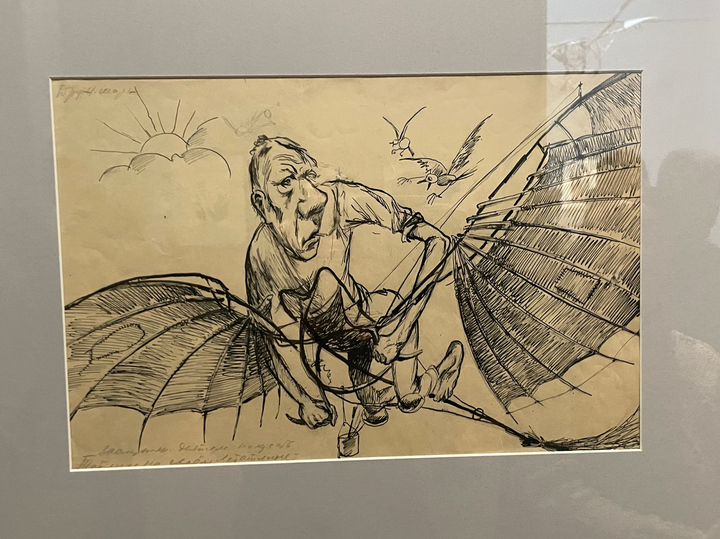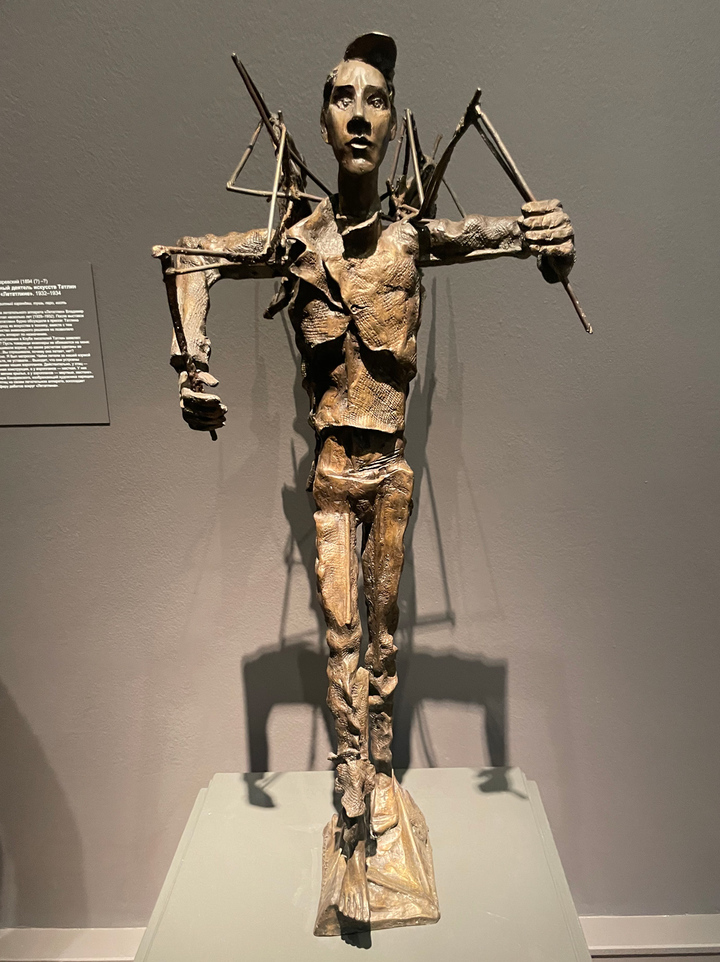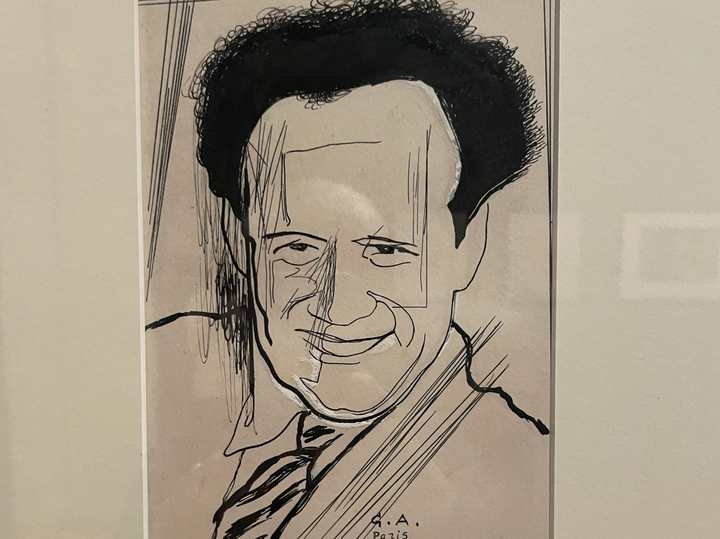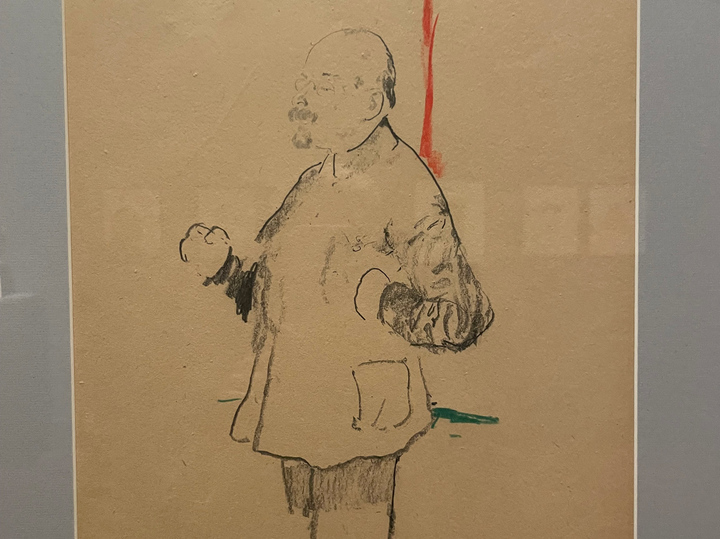Portraits of the main cultural heroes of the early twentieth century were collected in the New Tretyakov Gallery
[ad_1]
The title of this intimate but revealing exhibition contains a slightly changed title of the book by one of the brightest wits of the first third of the twentieth century, Vadim Shershenevich, who wrote memoirs in the 1930s. His book “The Magnificent Eyewitness” is a portrait of the era. This is an appreciative, impressive, very bold and personal look at famous contemporaries. The exhibition of portraits entitled “Magnificent Eyewitnesses” is the same in spirit and content. There are more than 70 works here – from elaborate portraits and sculptures to quick cartoons and single-line drawings. Malevich, Tatlin, Lisitsky, Yesenin, Akhmatova, Gumilyov, Mayakovsky, Eisenstein – each image reflects not only the model, but also the author of the portrait.
“It is no coincidence that in the title of the exhibition I used a quote from Vadim Shershenevich’s memoir-novel, where he described his contemporaries,” says exhibition curator Tatyana Goryacheva. — In this exhibition, everyone is a “magnificent eyewitness”: both artists and models. Their destinies are intertwined with each other and with the time in which they lived. These portraits were created in an era of tectonic shifts. The First World War, revolution, NEP, the fight against formalism – they had to go through a lot. No less important is that at this time the genre of portraiture itself is changing. Artists abandon the idea of showing a person in general, a portrait does not necessarily look like a model, it is an impression, a poisonous or kind caricature, an author’s, personal view, which often reflects more the artist than the model.
Indeed, the same people in portraits look different. Everyone has their own mood, their own tone, their own accent. Here are two self-portraits of Kuzma Petrov-Vodkin, created around the same time – in 1921. In the first one, written in ink, the eyes are highlighted. He looks into the very essence of you with a somewhat glazed, but piercing gaze. Next to it is a self-portrait in arabic pencil with closed eyes, where the artist resembles a young Lenin. And the features seem to be the same, but it seems that this is a completely different person.
There are also almost abstract portraits in the exhibition. Thus, Mikhail Matyushin painted himself in the form of a crystal, and this is not just a portrait, but a concept – part of his philosophical research about the world as an “organic whole.” In 1914, the artist began working on crystal self-portraits and created a series with a hidden meaning, where animate and inanimate nature are identical.
There are few colored works at the exhibition, the brightest and most famous is the self-portrait of Kazimir Malevich (1908–1910). It is painted in gouache and watercolor on paper, but looks almost like oil on canvas. Just at this time the artist met Mikhail Larionov, his style radically transformed. In this portrait, what works primarily is color, about which Larionov wrote: “color amazes, igniting the brain.” The self-portrait was painted against the background of the unsurvived work “Bather” from the “Red” series – naked female figures can be seen behind Malevich’s back. These red accents seem to be harbingers of the upcoming tectonic shifts mentioned by the curator of the exhibition. Next to this work there is another portrait of Malevich, painted by the realist artist Yevgeny Katsman (presumably in 1916). He was married to Sofia Rafalovich’s sister, Malevich’s second wife. This is all that united the two artists. Although no, they also lived on the same territory – in a rented dacha in Kuntsevo and in the Rafalovichs’ house in Nemchinovka. That is, they were in constant contact. But Katsman’s view of Malevich and his own vision of himself are completely different things. Katsman’s black and white graphics do not reflect all the will, courage and indomitability thanks to which Malevich won his place in the artistic firmament. Before us is an ordinary person, with a direct, but somewhat tired look.

Several portraits depict another early century innovator, Vladimir Tatlin. Here is a caricature by Andrei Kanarevsky, where the artist is in the clouds on his Letatlin. It was created at a time of heated discussion in the press about his aircraft: Tatlin was reproached for leaving art for technology and for the imperfection of the engineering solution. There is also a caricature by Kukryniksy in the exhibition, where Tatlin is with a cigarette in his teeth, small slitted eyes, flabby and tired.

Next to him is a bronze sculpture of Tatlin, created by Yuri Khorovsky already in 1982. Here the artist appears as a spiritual dreamer, and his thin figure is reminiscent of Giacometti’s style. This is a completely different Tatlin, assessed years later. There’s another portrait right there—a quick sketch by Alexander Labas depicts the artist as a musician. Tatlin really had an extraordinary musical talent – he played the bandura. Moreover, the artist made several of these stringed instruments himself. By the way, Tatlin’s portraits are just opposite the hall where his famous “Letatlin” is on permanent display.

There are many caricatures on display, most of them created in the 1930s. There is, for example, Boris Pasternak, performed by the Kukryniksy in 1934. The writer appears in the form of a sphinx on the podium. There is a portrait of a smiling Sergei Eisenstein, along whose face there is a line in the shape of a square. Perhaps this is a hint of a connection with Malevich, with whom they lived next door in Nemchinovka – the avant-garde artist “infected” the director with the ideas of Suprematism, and the director gave the artist the idea of making a film, which, however, did not come to life.

There are also portraits of Larionov and Goncharova, where the spouses depicted each other literally in one movement. Rolling Mayakovsky by Elizaveta Kruglikova. And the People’s Commissar of Education Lunacharsky, behind whose back there is a red trail (author – Filipp Malyavin). In a word, the portrait of the era is very different and heterogeneous, woven from emotions, impressions, and assessments.
[ad_2]
Source link






